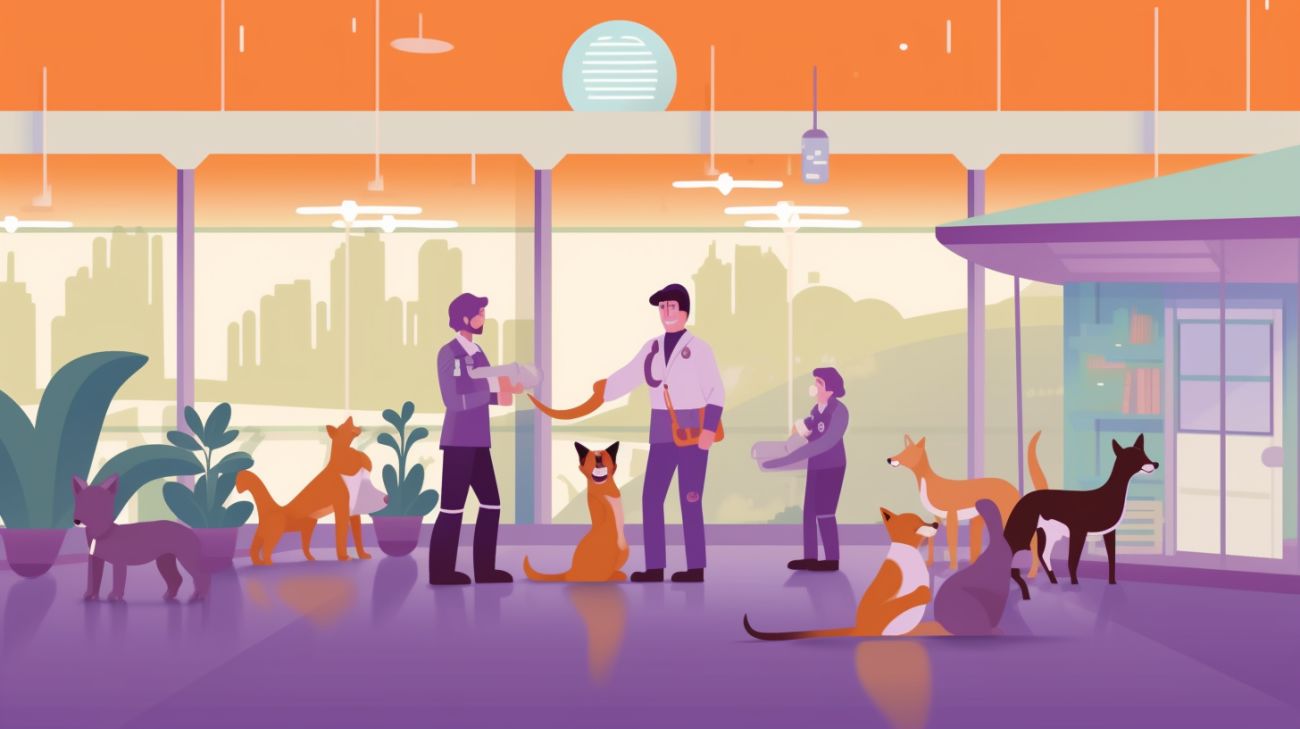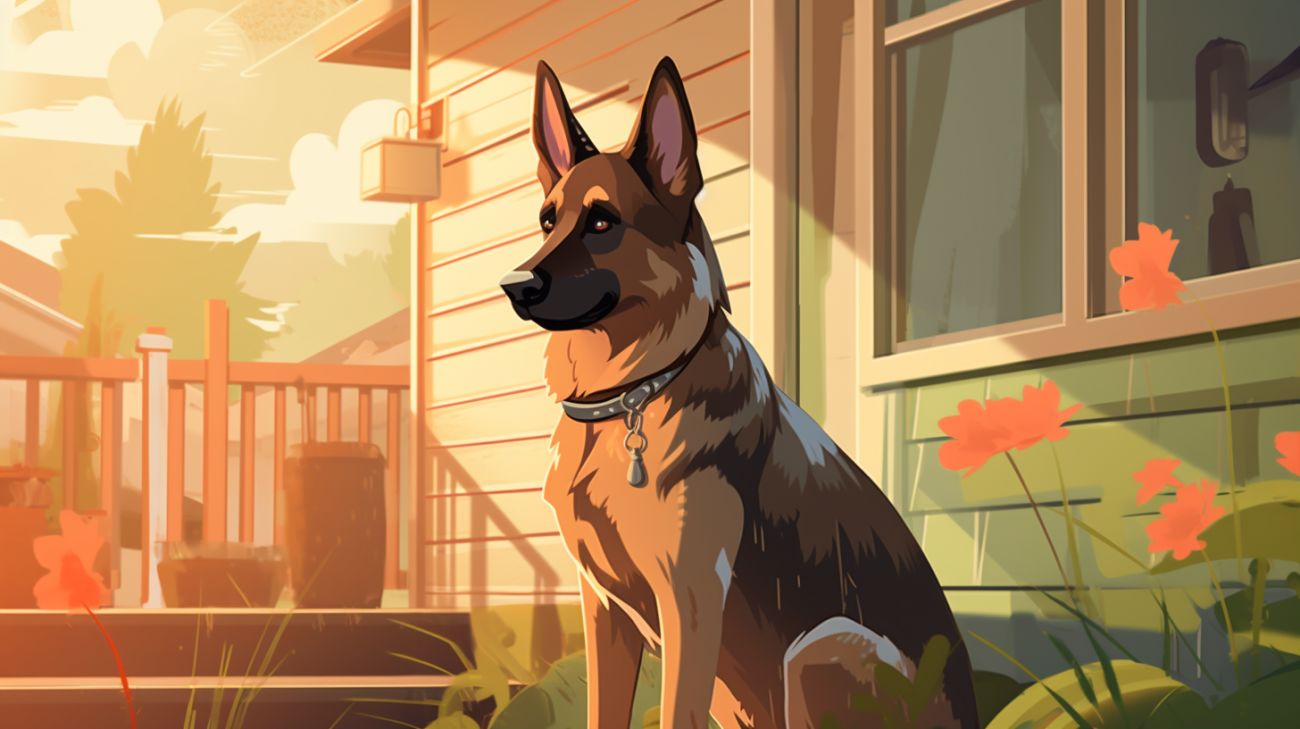Key takeaways
There are three important steps to take when trying to find any kind of lost pet.
These include physically searching for them, reporting them missing, and using social media.
We explore each step in detail before offering our expert insights and top tips to make sure your search is as effective as possible.
We’ll also list the top 3 most common reasons why pets run away so you can prevent this from happening in the future.
Quick Navigation
How to find a lost pet in 3 steps
1. Physically search for them
Backyards: If your furry friend ran away from home, the garden offers plenty of good hiding spaces. Check under and in garden furniture, up trees, in hedges and bushes, and in holes that have been dug.
Outbuildings: Structures like sheds, garages, and bin stores make for great adventures. However, it's easy to become trapped inside them. Check each area thoroughly and open up all the doors to make for an easy escape.
Under cars: Despite the danger, if a small animal escapes, like a bunny or a cat, they will often seek shelter underneath cars.
Neighbors' houses: Most pets are sociable beings, and they're always trying to make friends. Your neighbors' gardens and houses will be very interesting to your pets, so, with permission, be sure to search next door!
Local parks: More active pets, like a dog, will have memorized the routes to their favorite places, like the local park. If they've decided to take themselves on a walk, it's likely they've taken a route they remember.

Stay on the trail: If you lost your pet on a walk, you should stay on the trail and retrace your steps. As you do this, gently call their name and thoroughly search every area.
At the start/at the car: Try returning to where you started the trail, whether that was by foot or by car. Dogs, in particular, have impressive homing abilities and a sense of direction, so they will be able to find their way back to the beginning.
Nearby farms: If your pet is in 'survival mode' after getting lost, they will seek shelter, food, and isolation. Farms are a great option for this because they are generally quiet and perceived as 'safe.'
Nearby fields: If your dog is frightened, they will try to find somewhere completely secluded. They may also be trying to find their way home and will choose the routes with the least noise, making fields a good option.
Nearby towns: If you have a particularly confident and sociable pet, then they may be attracted to the sound of people and other animals, making towns a good option.
2. Report them missing
Veterinarians in the area
Local animal shelters
Wildlife centers
Animal rescue centers
Dog wardens
Microchip company

Their name
Whether they are microchipped
Physical description
Photos if possible
Contact information
Where they were last seen
3. Use social media
Photos
Physical description
Description of personality (aggressive, shy, timid, confident)
Where they were last seen
Contact details

Provide you with a personal dashboard where you can manage the search and monitor sightings
Offer expert support and guidance
Send you free expertly designed and printable missing pet posters
List your lost pet on our website
Social media is a fantastic tool for finding lost pets. It connects not only family and friends but also neighbors and communities.

Tips for finding lost pets
Search at night
Fewer people: At night, there are fewer people around in general. The lack of crowds means your pet will be more likely to come out of hiding. If they can only hear and see you, their trusted owners, they're more likely to come to you.
Reflective eyes: Most animals are great hiders, and this is why they're so hard to find. However, at night, there is one thing that gives them away, and that's their reflective eyes. If you use a flashlight, you should be able to see their shining eyes, even if their bodies are completely hidden.
Ability to track them: It'll generally be quieter at night, meaning you'll be able to listen and look out for any signs of your pet without any disruptions. This will make it easier to track them and follow certain paths you think they may have taken.

Use their senses
Take strong-smelling food with you
Bring familiar-smelling clothes and blankets
Bring their favorite toys with you
Call their name gently
Dogs can pick up on a scent from up to 12 miles away (20km), and cats can hear frequencies three times higher than humans.

Lure them home
Opening doors and windows so familiar sounds and smells can travel further
Leave toys, blankets, and clothes outside
Leave strong-smelling food outside

3 Reasons why pets run away
1. Neglect
Not enough food and water
Inadequate shelter
Lack of attention
Lack of stimulation
Lack of respect for their territory (visitors coming and going, loud noises, and lack of boundaries)
Not cleaning their environment

2. Curiosity
3. Instincts
Hunting: We're used to seeing a cat chase a mouse or a dog chase a squirrel, and this is because their hunting instinct will tell them to follow and kill prey. If your pet decides to do this on a walk or outside, they may find themselves lost and disoriented. This can make it difficult for them to find their way back to you, and therefore easy to get lost.
Mating: If a male dog picks up the scent of a female dog in heat, they will run for miles to try and find them. This is the same amongst most pets if they aren't neutered. If they leave their territory, they can become 'displaced,' which means they will no longer understand their location and be able to find their way home.

FAQs
What are the chances of finding a lost pet?
The chances of finding a lost pet differ based on the type of animal. For example, 70% of cats are found, whereas 90% of dogs are found.
How do you find a lost dog easily?
To find a lost dog easily, you need to bring treats, toys, and strong-smelling clothing as you search for them. You also need to report them missing to as many shelters as possible.
What to do if a pet is lost?
If your pet is lost, you need to report them missing to as many shelters, veterinarians, and animal rescue centers as possible. Then, start a thorough physical search and let your neighbors know.
Can you call the police for missing pets?
You should generally avoid calling the police for a missing pet, unless you believe they have been stolen. Instead, report them lost to local animal shelters and animal rescue organizations. If your dog has gone missing, contact the local dog warden.



